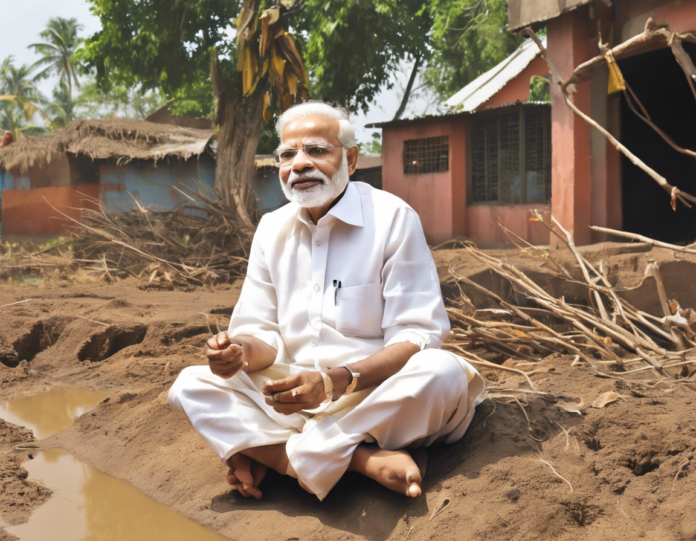India’s rural landscape is home to a significant portion of the population, with housing being a critical element in the overall development and well-being of rural communities. The Pradhan Mantri Awas Yojana Gramin (PMAY-G), launched by the Indian government, aims to address the housing needs of rural areas and improve the quality of life for those in need.
Understanding PMAY-G
PMAY-G is a flagship program of the Ministry of Rural Development that seeks to provide “Housing for All” in rural areas by 2022. The scheme focuses on providing pucca houses with basic amenities to all houseless families and those living in kutcha and dilapidated houses. This ambitious initiative aims to boost rural infrastructure, uplift living standards, and contribute to overall rural development.
Key Features of PMAY-G
-
Beneficiary Identification: The beneficiaries of PMAY-G are identified based on data from the Socio-Economic Caste Census (SECC) to ensure transparency and prioritize those in need.
-
Financial Assistance: Eligible beneficiaries receive financial assistance for the construction of their homes, including direct transfer of funds to the beneficiary’s bank account.
-
House Design: The houses constructed under PMAY-G are designed to be resilient, cost-effective, and built using local materials, taking into consideration the local climatic conditions.
-
Convergence: The scheme emphasizes convergence with other government programs to provide electricity, sanitation, and clean cooking fuel, among other amenities, to the beneficiaries.
-
Monitoring and Evaluation: PMAY-G incorporates robust monitoring mechanisms to track the progress of house construction and ensure quality standards are met.
Progress and Impact
Since its inception, PMAY-G has made significant strides in transforming rural housing infrastructure across India. The scheme has benefited millions of rural households by providing them with safe and secure housing, thereby improving their quality of life. The following are some of the notable impacts of PMAY-G:
-
Reduction in Homelessness: PMAY-G has contributed to a substantial reduction in homelessness in rural areas by providing pucca houses to eligible beneficiaries.
-
Improved Living Conditions: The scheme has led to a significant improvement in the living conditions of rural households, offering them better shelter and access to basic facilities like clean water and sanitation.
-
Empowerment of Women: PMAY-G promotes the ownership of houses in the name of female members of the household, empowering women economically and socially.
-
Boost to Rural Economy: The construction activities under PMAY-G have generated employment opportunities in rural areas, stimulating the local economy and promoting sustainable development.
-
Climate Resilience: The emphasis on using local materials and considering local climatic conditions in house construction enhances the resilience of rural homes to natural disasters.
Challenges and the Way Forward
While PMAY-G has achieved commendable success in enhancing rural housing, several challenges persist. Addressing these challenges is crucial for the sustainable growth and development of rural areas. Some of the key challenges include:
-
Funding Constraints: Adequate funding is essential to ensure the timely implementation of the scheme and reach out to all eligible beneficiaries.
-
Logistical Issues: Logistics, especially in remote rural areas, pose a challenge in the timely delivery of construction materials and skilled labor, thereby affecting project timelines.
-
Quality Control: Ensuring quality construction practices and materials is vital to enhance the longevity and safety of rural houses.
-
Awareness and Participation: Increasing awareness among rural communities about the benefits of PMAY-G and encouraging their active participation in the scheme is crucial for its success.
To overcome these challenges and further strengthen the rural housing ecosystem, the government, in collaboration with local authorities and stakeholders, must continue to:
-
Enhance Monitoring Mechanisms: Strengthen monitoring and evaluation mechanisms to track the progress of house construction and ensure quality standards are maintained.
-
Skill Development: Provide training and skill development programs for masons and construction workers to improve the quality of construction and promote sustainable practices.
-
Innovative Solutions: Encourage the adoption of innovative technologies and sustainable building practices to enhance the efficiency and resilience of rural housing.
Frequently Asked Questions (FAQs)
- Who is eligible to avail benefits under PMAY-G?
Beneficiaries are identified based on the data from the Socio-Economic Caste Census (SECC) conducted by the government.
- How is financial assistance provided to beneficiaries under PMAY-G?
Financial assistance is directly transferred to the beneficiary’s bank account in installments for the construction of their house.
- Can beneficiaries choose the design of their houses under PMAY-G?
The houses constructed under PMAY-G follow a standard design to ensure resilience, cost-effectiveness, and suitability to local conditions.
- Is there a provision for monitoring the progress of house construction under PMAY-G?
Yes, PMAY-G incorporates robust monitoring mechanisms to track the progress of construction and ensure quality standards are met.
- How does PMAY-G contribute to the empowerment of women in rural areas?
PMAY-G promotes the ownership of houses in the name of female members of the household, thereby empowering women economically and socially.
- What are the key benefits of PMAY-G for rural households?
PMAY-G provides safe and secure housing, access to basic amenities like water and sanitation, empowers women, boosts the local economy, and enhances climate resilience.
- What are some of the challenges facing PMAY-G implementation?
Challenges include funding constraints, logistical issues in remote areas, ensuring quality control, and increasing awareness and participation among rural communities.
In conclusion, PMAY-G stands as a testament to the government’s commitment to transforming rural housing and improving the lives of millions of rural households in India. By addressing challenges, fostering innovation, and ensuring community participation, PMAY-G can continue to drive sustainable rural development and create a brighter future for rural communities across the country.




